Proper positioning can make a huge difference to your child: less fear, less anxiety AND it can also make a huge difference to the person providing the care (you!) with less stress, more safety and a higher chance that the care can be provided effectively.
In the “olden days” we used to put children on their backs for all kinds of care (yes, sometimes even tying them down with scarves or similar bindings…). We know now that this can make children feel vulnerable or even traumatized, especially when treatments are given often.
Nowadays, the research shows that positioning for comfort is the best approach. Ask your health care team which positions they recommend for your child. It will be important to consider whether you have another person available to you at home to help with positioning when you are providing the care.
Most importantly, when a child is comfortable, he will feel secure. Below, we have summarized the main types of positioning, with a brief list of advantages and recommended use.
Positions (examples)
Lying down
| Swaddling (wrapping up in a blanket) Option to leave one limb outside of swaddling in order to provide care |
Lying down | Frog-leg position |
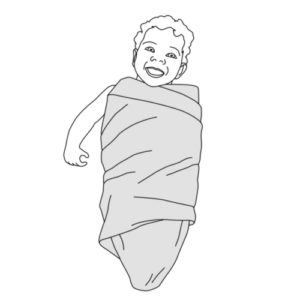 |
 |
 |
Benefits:
- Parent/helper can be physically close to the child, partially holding him/her, if needed
- Parent can easily talk to the child, support the head and hold the legs, if needed
- Easy to swaddle a young child in blankets; this is a source of comfort for very young children (helps them feel secure)
- Easy access to arms, legs, chest and abdomen
- Easy to implement distraction for the child
Recommended for:
- Providing care for nose, mouth, eyes or ears (eg, putting in eye drops or suctioning nose)
- Most central line care, including dressing changes and central line access
- Injections in the arm or leg
- Intermittent urinary catheterization (frog leg)
- Abdominal procedures (eg, peritoneal dialysis, intestinal stoma care)
Sitting
| Back-to-chest “Joey” (like a kangaroo!) | Chest to chest “Bearhug” | Sitting sideways on lap |
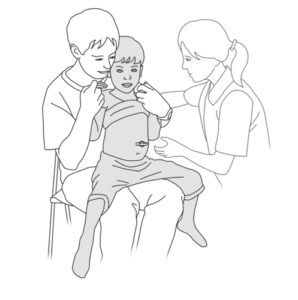 |
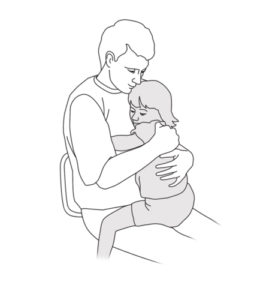 |
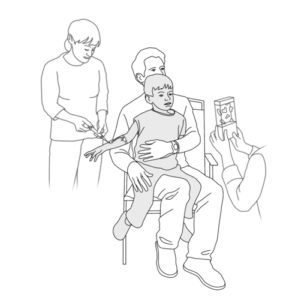 |
Benefits:
- Sitting is usually less threatening to a child than lying down
- Parent can stay nearby
- Optimal position to facilitate the use of distraction
- Legs and arms of the adult can be useful to limit the movement of the child’s limbs
- The child can easily turn his/her head to watch or avoid seeing the care, whichever is the preference
Recommended for:
- Almost all care
- Providing care for the nose, mouth, eyes or ears
- Intramuscular Injections in the arm or leg
- Dressing change or insertion of a venous access in the arm or leg
- Enterostomy care
To promote autonomy
| Lying down | Sitting | Standing up |
 |
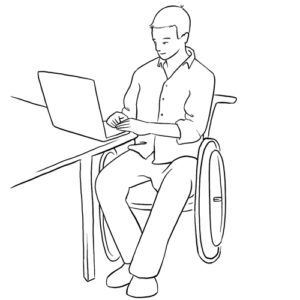 |
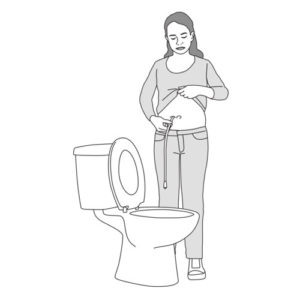 |
Benefits:
- The child in charge of his own position and distraction
- Parent can be nearby to provide support
Recommended for:
- Any care








